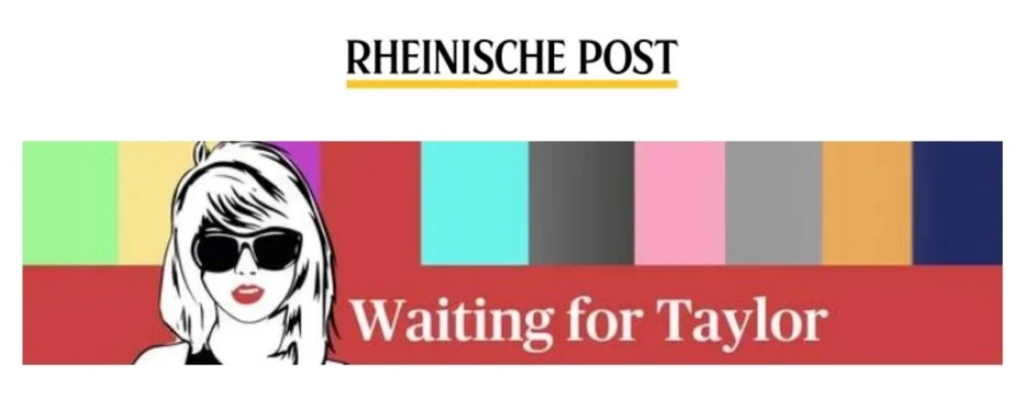

You're reading The Audiencers' newsletter #56 sent out on February 5th, 2025. To receive future newsletters straight to your inbox every two weeks, sign up here.
In today’s newsletter:
- The French Tech Stack Study 2024 is out: a look behind-the-scenes at the tools used by French Media
- The Irish Times’ checklist for being audience-first in the newsroom
- From Swifties to subscribers: a superstar-focused newsletter becomes a game-changer for acquiring new audiences
- Recommendations to add to your reading list
French Tech Stack Study 2024
Now in its fourth year, the latest Tech Stack Study by France’s leading university, Sciences Po, provides publishers with an anonymized benchmark of the range of tools used by the French media to produce, distribute and monetize content.
Why it matters: This survey highlights the critical balance French publishers must maintain between adopting innovative technologies and managing economic constraints, reflecting broader trends in the global media landscape.
The big picture: Despite the availability of leading tools in certain categories, no single technology has become the standard, indicating a fragmented landscape driven by varied publisher needs.
By the numbers: Over 70% of respondents now use AI tools like ChatGPT and DeepL, signaling a rapid adoption of artificial intelligence in content production and marketing.
Off-the-shelf solutions: Satisfaction with tech stacks is improving, yet challenges remain in integration, training, and budgeting, underscoring the need for more mature, strategic solutions.
In-house tech: While the move towards in-house technology solutions is notable in areas like CMS and live text tools, the lack of standardization poses challenges in interoperability and efficiency, pointing to an ongoing struggle between customization and standardization.
> A full summary of the study and some key results (at the end) on The Audiencers
The Irish Times’ checklist for being audience-first
Thanks to successful work on better targeting and serving younger female readers with WAN-IFRA’s Table Stakes Europe project, The Irish Times’ team gained a better understanding of what audience-centric journalism looks like, something that they’ve since been able to apply to other demographics.
To ensure these lessons are usable and integrated into editorial work, they created a “How to know if you’re audience-first” checklist to be applied at the moment of production:
- Am I putting the audience(s) ahead of office traditions?
- Am I thinking of headlines, pics and platform(s) from the outset?
- Am I using, or learning from, data?
- Am I asking the 4 Audience Approach questions routinely in my work? (Who is my article for? How will they see themselves in the story? What do they need? How can it be best promoted?)
- Am I comfortable using, and getting information from, different social media platforms?
- Am I talking to “real people” affected by stories rathe the exclusively lobbyists or politicians?
- Am I explaining or providing context for audiences who don’t have specialist knowledge?
- Do I see value in publishing content on video platforms?
- If my story does not fly, can I test other headlines/approaches?
- Am I willing to experiment – and to stop doing things that are not working?
From Swifties to subscribers: a superstar-focused newsletter becomes a game-changer
With Taylor Swift soon arriving in Germany, Rheinische Post’s idea of “Waiting for Taylor” was born, a free newsletter launched 10 weeks before the first concert, intending to provide information for Swifties, explain the Taylor Swift phenomenon to everyone else and connect with younger audiences.
Getting the word out: “a deliberately large funnel and a personalized approach”
- “Waiting for Taylor” was advertised on Instagram, Facebook and in the newspaper, and had banner ads on our homepage and other sites
- The newsletter was automatically mentioned in all sub-editorials such as Music, Streaming, Television and Panorama/People
- A sponsor was very quickly found for the newsletter series
- A mini-publishing team from several publishing departments met regularly to drive the project forward
- The metered paywall was switched off for all Taylor articles, except for the concert review from the first evening, which was placed behind the paywall

The results:
- Initially reaching 3,300 subscribers, the newsletter ended up with about 5,000
- An open rate of between 21 and 25 percent
- With on-site Swift content, they reached 2,450,000 page impressions and six conversions. The share of direct traffic was also very high (71.4 percent)
What next?
“Very quickly – already during the Taylor newsletter – we realized we didn’t want to give up on this audience (female, younger, interested in music and cultural con- tent) and so we developed a follow-up newsletter.” shares Martina Stöcker, Head of News Management.
“Here & Wow” was already announced to the Swift readers, and when the Taylor train moved on, the new newsletter was launched.
- Almost all subscribers remained loyal – only 50 cancellations so far
- The new service is aimed at younger women every fortnight
- Topics include music, streaming, Booktok, reports on celebrities, but also topics from politics, society or health with a female perspective
- A slightly different concept, with more links and reading recommendations, and of course the newsletter now also includes articles behind the paywall or metered paywall
More recently, the publisher has also began to focus on other new audiences such as gastronomy, the Netherlands, young families and local sport.
> This case study comes from WAN-IFRA’s latest report. Find others from across Europe in our takeaway article on The Audiencers
Content to add to your reading list
- Slovakia’s Dennik N’s bold campaign brought 10,000 new subscribers in just four days
- New Thomson Reuters Foundation report: How journalists in the Global South and emerging economies are using AI, and the challenges they face
- Easy-to-cancel regulations are an opportunity rather than a threat
See you in 2 weeks,
Madeleine


